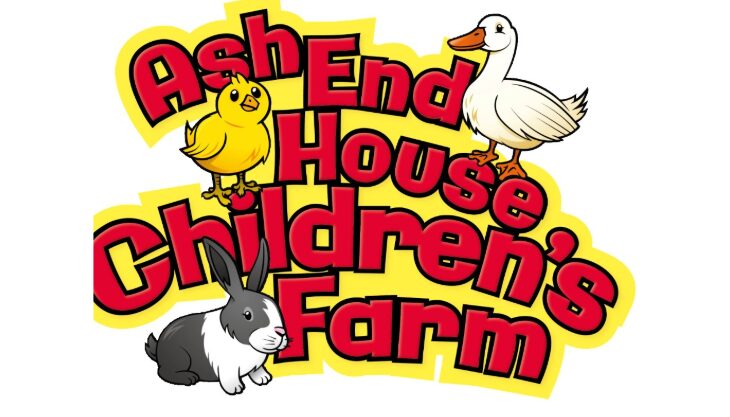Raring2go! Reviews Shine Books

Shine Books – for SEN inclusion
Have you heard of Shine Books? We all know each child is different, with their own strengths and weaknesses, and some find school life difficult. The additional challenges faced by children with special educational needs (SEN) and disabilities can leave them at greater risk of difficulties in adapting and learning at school. This can often leave children with SEN feeling (and sadly sometimes being) excluded by their peers. While most children reach milestones and achieve well in literacy skills, children with SEN and disabilities may be left wondering why it is so difficult for them, often questioning their own intelligence. Their peers may also  wonder why their friend isn’t able to ‘keep up’, which can lead to misunderstanding, teasing, bullying and even exclusion from social groups and events.
wonder why their friend isn’t able to ‘keep up’, which can lead to misunderstanding, teasing, bullying and even exclusion from social groups and events.
Two of my own children have SEN; both are incredibly bright and highly intelligent – yet found school life, socialising and academic learning very difficult. This is why I was particularly excited to hear about Shine Books, published for and dedicated ‘To anyone who ever felt like they didn’t fit in’. I visited the website to find out more.
‘Our hope at Shine is that our books can help to normalise a range of SEN (special educational needs) conditions within society. Shine Books w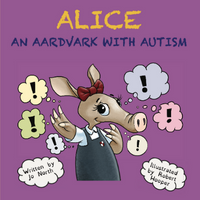 ere created primarily for 3-8 year olds, but there is no set age limit! We are passionate about taking away the stigma that often comes with them, and we believe that educating children from a young age in this area can have a positive impact on acceptance and understanding across society.’
ere created primarily for 3-8 year olds, but there is no set age limit! We are passionate about taking away the stigma that often comes with them, and we believe that educating children from a young age in this area can have a positive impact on acceptance and understanding across society.’
We contacted author and former teacher Jo North, who kindly sent us the six Shine books for SEN to see for ourselves just how fabulous they are – and we weren’t disappointed! The books introduce us to six loveable and fun characters, beautifully illustrated by Robert Hooper, all living with different conditions which present them with challenges at school. While the books are highly beneficial for children living with those challenges, they are also a great way of introducing all children to the themes of diversity, nurturing an ethos of understanding and empathy from a young age. Most children without SEN will be in classes with children who do have SEN – these books pave the way for inclusion and friendships which previously may not have been easily made.
Six Shine books, SEN inclusion.
Shine books introduce us to six character with SEN: Alice, an Aardvark with Autism; Charlie, a Chimpanzee with ADHD; Dylan, a Dog with Dyslexia; Emma, an Elephant with Epilepsy; Ollie, an Otter with OCD; and Priya, a Panda with Dyspraxia.
What we most love about all the Shine books for SEN is the author’s intrinsic understanding of children’s self confidence, and the clear link between social relationships with peers, and levels of self confidence in children. Friendships are massively important. While a teacher’s (and teaching assistant’s) knowledge and understanding of each SEN provides the necessary foundation for their learning, what is most important to each character’s experience and feelings of self worth revolves around their classmates thoughts and reactions.
As pa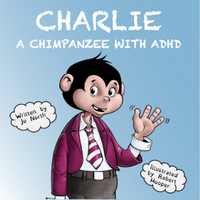 rents, we should never underestimate the power and influence classmates have on our children’s wellbeing, and the power the actions of our own children have on their friends. ‘Always be kind’ is indeed a great lesson for our youngsters; sharing these books with your child is a great way to develop that ethos.
rents, we should never underestimate the power and influence classmates have on our children’s wellbeing, and the power the actions of our own children have on their friends. ‘Always be kind’ is indeed a great lesson for our youngsters; sharing these books with your child is a great way to develop that ethos.
You can buy any or all of the Shine books for SEN from the Shine Website here – 10% of all sales go to a charity for the SEN featured in the book. Each book begins with a clear message – it is a work of fiction, not intended as a guidance for diagnosis, and that symptoms of each condition will have variances to those depicted by the character in the book. But if you have any concerns for your own child, it is important to seek professional guidance. Your child’s school is always a good place to start, speak with their teacher about any concerns you may have. Sharing these books with any child who is struggling to fit in can help them realise they are not alone. So here is a brief description of the books to introduce you to each of the lovely characters!
Alice(An Aardvark With Autism) is incredibly good with numbers, but she doesn’t like loud noise, and is anxious about being in noisy situations. She really wants to be with her friends, but a birthday party proves too challenging. Alice finds it difficult to explain how she is feeling, but Alice’s mum and Alice’s school friends come up with a solution, enabling Alice to enjoy a birthday party with her friend Dylan after all. We love this book as it highlights Alice’s strengths, and demonstrates how a little understanding and planning can enable a child to be included in social events.
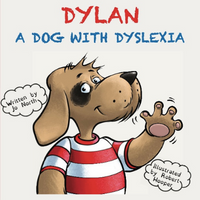
Charlie (A Chimpanzee With ADHD) immediately became our favourite character – and one we could relate to! Charlie is a happy chimp, full of energy, initially misunderstood and labelled ‘naughty’. The book highlights the difficulty children with ADHD face in class, when sitting still and listening for any length of time is so difficult. We love the explanation the teacher gave to Charlie and his friends when he was diagnosed with ADHD – ‘he was a bit like a bottle of fizzy drink, and every now and again he just needed to take the lid off and let the bubbles out!‘ Charlie’s teacher and teaching assistant provide Charlie with some excellent coping and learning strategies which result in Charlie enjoying school, and making some great friends too.
Dylan (A Dog With Dyslexia) gives a clear insight into the emotions experienced by any child with dyslexia. Dylan suffers anxiety over an impending spelling test, and considers pretending to be ill to skip school. ‘Dylan hated that everyone must think he wasn’t as smart as they were.’ During the test, another pupil complains that Dylan has extra time, perfectly illustrating how important it is for other children to know of, and understand, the difficulties faced by children with SEN. The support and understanding offered by Dylan’s friend Emma is heart-warming, and demonstrates how a little understa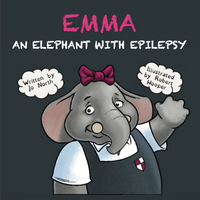 nding can be so powerful. Author Jo North balances the focus of the book with the inclusion of things Dylan is very good at, reinforcing how powerful it is for every child to be reminded of their strengths to maintain their confidence and happiness.
nding can be so powerful. Author Jo North balances the focus of the book with the inclusion of things Dylan is very good at, reinforcing how powerful it is for every child to be reminded of their strengths to maintain their confidence and happiness.
Emma (An Elephant With Epilepsy) covers more visible conditions, and Emma’s embarrassment over her epilepsy is reflective of how many children with more obvious needs and disabilities may feel. Her classmates have been advised about epilepsy and know what to look for as early signs of an impending fit, and how to help on a practical level when Emma does have a fit. ‘They were very proud that they had been able to help her.’ Emma’s classmates emotional support and empathy is touching. This book really highlights the positive impact gained by childhood knowledge and understanding of specific conditions such as epilepsy.
Ollie (An Otter With OCD) is a character living with anxiety which is heightened by changes to routine or things not going to the plan he has in his mind. The book demonstrates the impact of OCD on Ollie’s ability to perform, and how powerful and overwhelming the resulting anxieties are. His parents and teachers find ways to support Ollie working with his condition, rather than trying to change Ollie’s behaviour. ‘… he just needed to do things in his own way.’ This acceptance of Ollie’s needs allow him to really shine. We particularly liked the positive support rather than pressure to change Ollie’s behaviour. Historically, how many square pegs were forced into round holes without this kind of understanding? Never good for the peg, the hole, or even the hammer trying to force it to fit!
Priya  (A Panda With Dyspraxia) is a lovely character who finds physical skills more challenging than her peers. This book touches on the relief of receiving a diagnosis, something many families and children with SEN will probably relate to, and how parents can find ways to limit the impact of a condition such as dyspraxia on their child’s every day life. Priya is embarrassed and worried by the prospect of her peers reacting to some of the equipment and items put in place to assist her. She is happily reassured by her classmates, who don’t seem to notice some of the items Priya is worried about, and who are very positive about the items they do notice.
(A Panda With Dyspraxia) is a lovely character who finds physical skills more challenging than her peers. This book touches on the relief of receiving a diagnosis, something many families and children with SEN will probably relate to, and how parents can find ways to limit the impact of a condition such as dyspraxia on their child’s every day life. Priya is embarrassed and worried by the prospect of her peers reacting to some of the equipment and items put in place to assist her. She is happily reassured by her classmates, who don’t seem to notice some of the items Priya is worried about, and who are very positive about the items they do notice.
We really love the books, I certainly wish they had been available to my children when they were young. Jo North has tackled many of the issues faced by children with SEN in a sensitive and positive way; the focus on the emotional and mental wellbeing of each character throughout each puts the reader into the character’s shoes, enabling any child (and adult) a glimpse into the thoughts and feelings of other children, most especially those with SEN. And for any child with SEN, the books provide a character they can relate to in a positive way. Mum Beckie told me ‘My daughter felt so much better after she read the dyslexia book. She loves it and tries her best to read it herself all the time. I think it makes her feel normal and gives 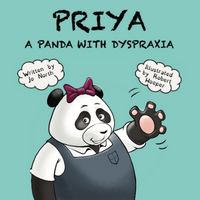 her some peace. It would be brilliant if other children could read them, to be more accepting around other children.’
her some peace. It would be brilliant if other children could read them, to be more accepting around other children.’
We absolutely agree!


